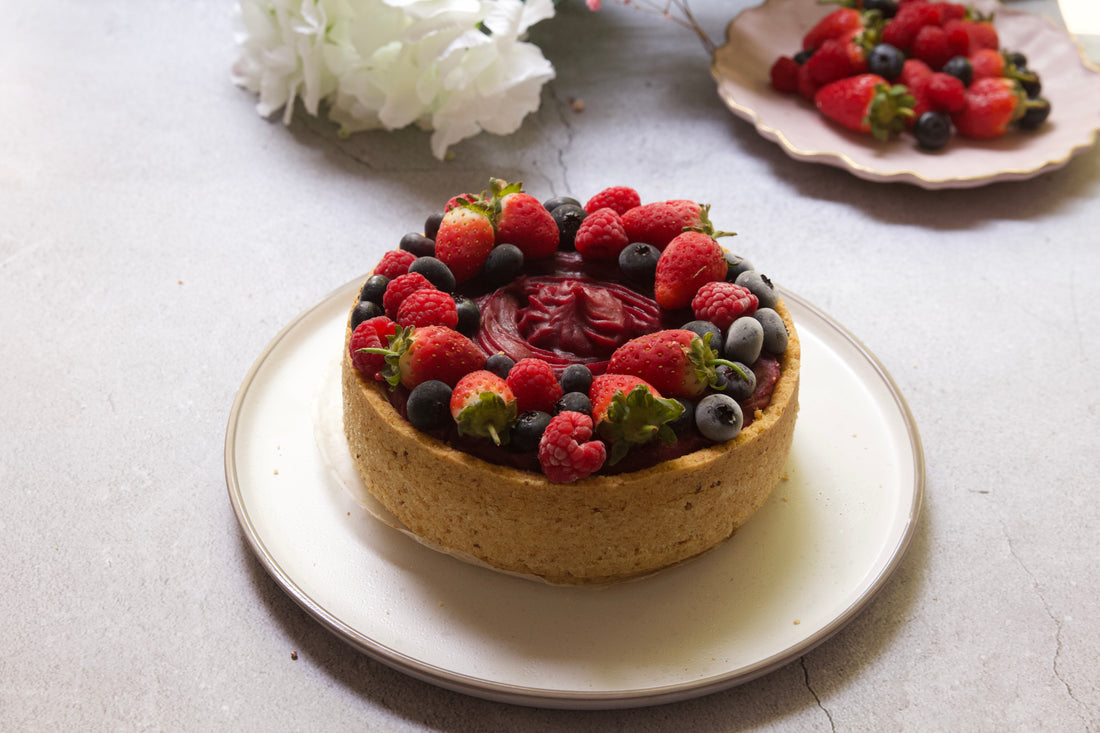
In order to understand which flour to use where, let's look at its properties. They are so much of healthier flours to make great alternatives to wheat flour. And if you use it correctly, you will get a light dessert, rich in fiber, which is not inferior to the classic one and even surpasses it in taste! And I generally don’t talk about the absence of extra and useless calories - this is an indisputable, and, of course, healthy flour is now much easier to find, it is sold in supermarkets and health food stores. Let’s talk about some the healthy flours and I will start with nut flours.
Ideal for making low-calorie desserts! This is a natural fat that gives baked goods their “juiciness” and crumbly texture. Very often I use almond flour which is my absolute Favourite, as it is neutral in taste and suitable for making biscuits, cookies, shortcrust base, muffins, its presence in any dessert complements its taste and texture. And is ot suitable for Keto diet too! Excellent in combination with rice, corn flour, oat bran. And if the dessert needs to be given a pronounced taste of a nut, then hazelnut flour, walnut flour or pistachio flour are suitable here.
It is extremely undesirable to replace this flour, especially that in recipes it is used in small quantities, as it is almost always combined with other types of flour. It complements and reveals the taste, makes pastries more creamy and “juicy”!
Next one is oat bran flour. Yes, It is bran that is the fiber and shell of the grain (and oatmeal is the kernel of the grain). The dessert will turn out with both flour and bran, but from the point of view of useful properties and a more neutral taste, I choose bran. They need to be ground in a coffee grinder to the state of flour, then they will not be felt in the dessert. With this flour, you can bake biscuits, pies, muffins and cakes too if mixed with another flour. It is better to combine bran with nut flour to make pastries more “juicy”.
Can be replaced with oatmeal, rice, corn, spelled flour in the same proportions. Note, you need exactly crumbly bran of a light color, but not crispy! And, if you follow gluten-free diet, look out for the certified gluten free oat bran when shopping for it. 
Another Favourite of mine is the brown rice flour. Light and neutral in taste, it is great for biscuits, tarts, muffins, pancakes, cheesecakes and other pastries because it is quite versatile. But still, I like to combine it with nut flour, which makes the finished product more oily and elastic. Rice flour is also excellently complemented by cornstarch, which gives the dough elasticity. Rice flour does not contain gluten, which makes the dough elastic.
it can be replaced in the same amount with oatmeal, corn, spelled, buckwheat, chickpea, whole wheat flour. But keep in mind that the taste and consistency of the dessert will change, they will become different. Nothing to worry about, but you must understand this when replacing. Also look at the final consistency of the dough before baking, you may need to increase the amount of flour or add liquid.

And at last coconut flour. It is great for cookies, muffins, cakes. I normally mix it with almond flour to help with the moisture for the cake, since coconut flour is much drier than any other flours mentioned above and requires to add more liquid to the cake. It is a great choice if you are allergic to other nut flours and it is suitable for diabetics and keto diet too.

I hope this information was useful for you and you will try to experiment with some of them next time you bake. Of course, these are far not all types of flour that exist, but I am talking specifically about those that I like to use in my cakes and desserts. They are extremely versatile, healthy, easy to work with and all of them are gluten-free.
Did you use any of the above flours in your baking? Comment bellow if you did. I would love to know about your experience with these or any other healthy flours and which one is your Favourite and why.

